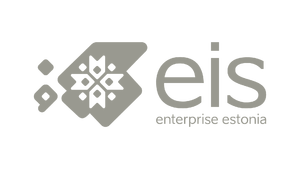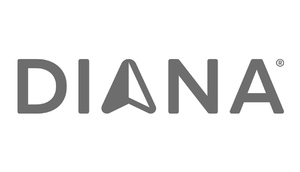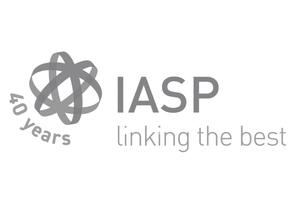29.10.2019
Do Activity Trackers Help Improve Health?
Activity trackers and fitness apps are designed to help people monitor and assess their health status. However, large-scale studies indicate that simply using a fitness app doesn’t automatically translate into improved health or weight loss. What’s more, legal professionals are concerned about the sharing of health data – an aspect often overlooked by users.
At the event in the Coffee Morning series organised by Tehnopol and Connected Health, Jaarika Järviste, a resident doctor in internal medicine, pointed out that activity trackers are used in disease prevention and screening as well as in medical surveillance and for improving prognosis. Through review of available literature on the subject and large-scale randomised studies, the answer to the question of whether activity trackers help improve health shows that health parameters remain the same and that wearing fitness trackers doesn’t improve physical activity levels when not combined with a clear goal.
The resident doctor admitted that those major studies were conducted a few years back, and a number of new devices with novel features have since been launched on the market. Simple step counters have evolved into fitness wearables that send notifications, track sleep quality or record ECG. Their data is also enhanced with evidence-based models promoting behaviour change and the collected data can be compared to the user’s previous or average results.
Although there is a variety of devices available, they all enable data transfer from one type of tracker to another. In terms of ease of use and wearing comfort, it is important whether a device can be worn on the wrist or around the upper arm or needs to attached to a belt.
The older the user, the higher the potential benefit for medicine
According to Järviste, studies indicate that fitness trackers are most often used by healthy, young individuals aged 18-35 (42-60% of users). As users in this age group are young and lead active lives, which also means that they are healthy and don’t have severe health issues, their data is, as a rule, of no use to medical specialists. For the latter, this kind of information can contain lots of noisy data.
In the 36-65 age group, fitness trackers are used by around 39.51%. Users in this age group can handle technology and the potential benefits are predominantly seen in the field of prevention. Among people over 65, a mere 1-7% use such devices, while it is their data that would be most useful in the medical field. Even when elderly patients agree to give fitness trackers a try, the older they are, the more quickly they tend to give it up.
Activity trackers show certain potential
Large-scale studies need to be conducted in the field of prevention because we currently lack evidence to understand the long-term benefits of fitness trackers. Focus is mainly on individual goal-setting as well as on changing old habits and forming new ones.
As for screening, doctors place high hopes on the detection of heart arrhythmias. Some studies show that a wrist-worn device can be used for heart rhythm monitoring. Apple Watch 4 is able to generate single-lead ECG recordings, which may be enough to assess heart rhythm. In other words, using fitness trackers for monitoring heart rate in certain user groups certainly is a promising outlook.
Activity monitors also show certain potential in medical surveillance and for improving prognosis, especially in patients with chronic pulmonary disease, cardiovascular disease and heart failure. Patients suffering from COPD have been studied thoroughly in this respect because their compensation scheme depends on their physical activity levels: activity monitors could be used to evaluate compensation level, monitor compliance with a rehabilitation plan as well as help patients understand the connection between physical activity levels and improved treatment adherence.
While the resident doctor admits that such devices show certain potential, she also recognises that to be able to take them up in medicine, science-based information is needed. Such data is obtained from well-designed studies which, until now, are scarce. Järviste also underlined that demand exists for devices with ever-growing accuracy – while fitness trackers’ developers let users choose their goals, data of a more specific nature is needed in medicine. Healthy users with an active lifestyle generate great amounts of noisy data which don’t represent meaningful output for doctors.
How is data collected by activity monitoring apps?
At the same event, Nele Nisu, a legal adviser and data protection officer at the Legal Department of the Ministry of Social Affairs, spoke about data and innovative apps, using the Endomondo app as an example.
She pointed out that specific medical information, data collected via sensors or information on health status fall under the category of health-related data. However, when data gathered by a wellness and lifestyle app is used to identify certain patterns (for example, when users disclose their age, sex, weight, height and sleep duration), such data offers lots of insights.
Nisu also touched upon the subject of consent forms. She reminded start-ups that consent must be freely given, specific, informed and unambiguous. Instead of 50 pages of text, it is more practical to use simple fields to be marked, checkboxes, sub-sections, previously defined parts, etc. Data processing starts from the moment of signing-up for an app and after that, users are forced to browse app settings to consent to the processing of various types of data. According to the legal specialist, it would be best if certain details and options could be chosen before signing up.
She also recommends avoiding absurd user terms and conditions which are inapplicable anyway. Consent must be specific, and terms and conditions should neither be surprising nor ambiguous.
According to Piret Hirv, Connected Health cluster manager, the key message to take away from this event is that specialists from various fields need to be involved in the development of apps to move in the desired direction right from the start and avoid big mistakes. “After all,” she commented, “the overall goal is to create solutions that have the potential to be used by doctors as valuable tools for improving patient health and the quality of medical services.”
The event titled Do Activity Trackers Help Improve Health? in the Coffee Morning series organised by Tehnopol Startup Incubator and Innovation Clinic platform of the Connected Health cluster took place on 24 October.
The Connected Health cluster led by Tehnopol Science Park is Estonia’s biggest healthcare tech community, uniting health service providers, health tech companies and all other key interest groups in the field. The cluster’s support enables domestic cooperation projects and the export of health technological solutions to other countries.
The cluster’s activities are co-financed by Enterprise Estonia.
You can find photos of the event here.

















